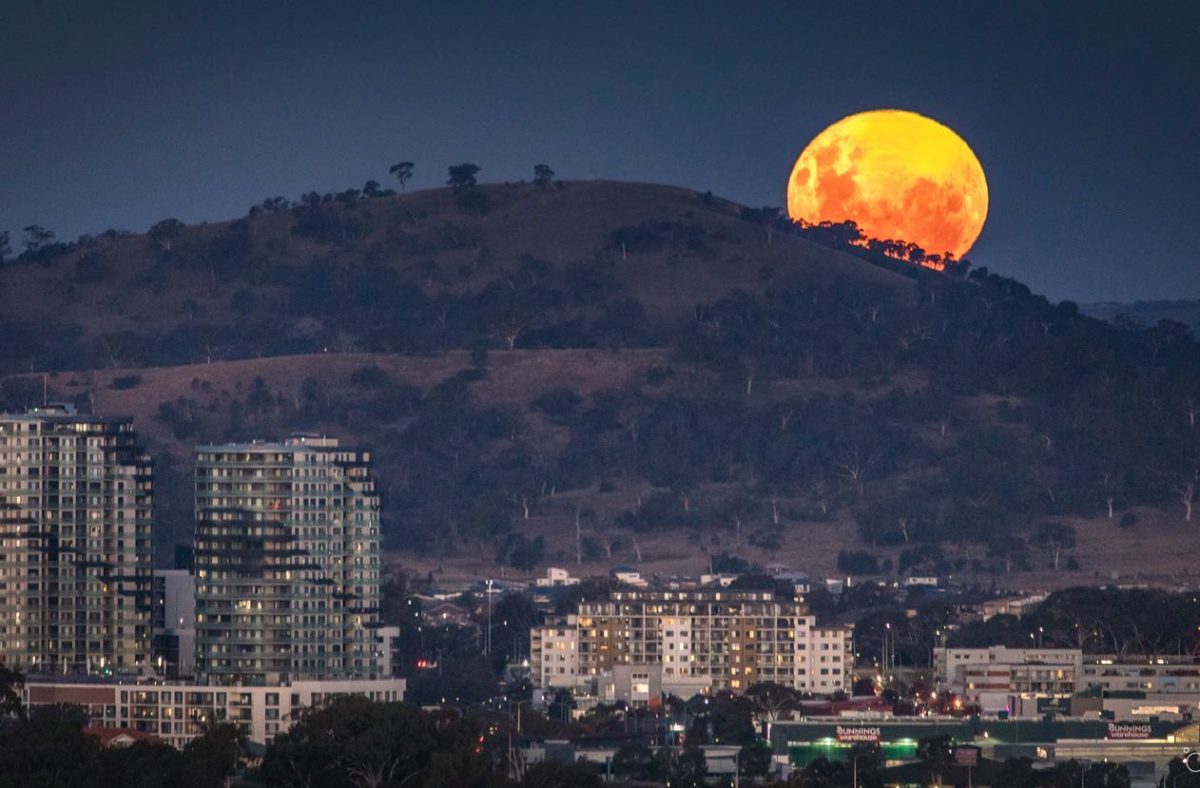
A supermoon rising above the hills. Photo: Ari Rex.
What’s even rarer than a blue moon? A ‘blue supermoon’. But that’s precisely what Australians will be treated to from Wednesday evening to Thursday morning this week.
August kicked off with what’s known as a ‘sturgeon supermoon’ and will now go out with another lunar phenomenon not seen since 2009, and it won’t be seen again until 2037.
But what is it?
The Moon’s orbit around Earth isn’t a perfect circle, which means there are times when it’s 363,396 km from us – called a ‘perigee’ – and other times when it’s 405,504 km from Earth – called an ‘apogee’.
When a full moon is furthest away during an apogee, it’s called a ‘micromoon’, and when it’s at its closest to Earth, a ‘supermoon’.
A supermoon can appear up to 17 per cent bigger than a micromoon and 30 per cent brighter.
Since 1946, a blue moon has been the name for the second full moon in a month.
Before this, ‘blue moon’ only ever referred to an obvious absurdity or extreme rarity, but a writer for Sky & Telescope magazine in the US accidentally changed that.
“This colourful term is actually a calendrical goof that worked its way into the pages of Sky & Telescope back in March 1946, and it spread to the world from there,” Kelly Beatty wrote in an article published on the magazine’s website in 2009.
The name has stuck, even though a blue moon isn’t all that rare. It takes roughly 29.5 days for the Moon to orbit the Earth, and most of our calendar months go for 30 to 31 days, so it’s normal for two full moons to occur within a month every two to three years.
Two supermoons occurring within the same month, well, that’s a different story. The last ‘blue supermoon’ happened in 2009, and after this month’s appearance, it won’t return until 31 January 2037.
It will rise above the horizon from 4:35 pm on Wednesday, 30 August, and from 5:46 pm on Thursday, 31 August, in an east-south-east direction.
Due to an optical illusion known as the ‘moon illusion’, it will appear larger when closer to the horizon compared with when it has risen higher in the sky.
Photographer Ari Rex holds regular astrophotography workshops and has some tips for moon-gazers.
“It will appear a bit bigger, but the average person won’t notice much difference when it’s in the sky, so I suggest people take a look when it’s rising,” Ari says.
For clear pictures of the Moon itself, including details on the surface, he recommends waiting an hour until it’s moved away from the horizon and the light pollution of the atmosphere.
“My top tip would just be to photograph it. From when it rises to an hour just afterwards to when it sets and everywhere in between. It’s a really special event – a blue supermoon only happens about every 10 to 20 years.”
Original Article published by James Coleman on Riotact.










